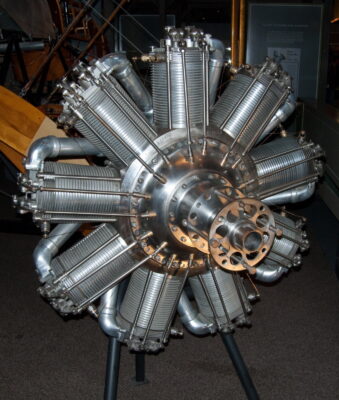
Bentley brought 6 cars to the Goodwood Festival of Speed this year, an event the organizers call the “ultimate summer garden party” for motorsports. One of them was a 103-year-old Bentley EXP2. Another was a Bentley Bentayga extended wheelbase SUV, towing 2.5 tons of straw.
Also in the mix was the Bentley Batur, a 745 horsepower coupé for the well-heeled who wish to get to the site of the next chukka as swiftly as possible. It is powered by the unique W-12 engine created by Volkswagen Group a decade ago by smooshing two of its narrow angle V-6 engines together in a single engine block with a common crankshaft.
The big news of the event for Bentley was that all of its cars ran on 100% biofuel without any modifications to the engines. The second generation biofuel meets the EU EN228 standard and is a direct replacement for gasoline. In fact, it is so chemically similar it actually is gasoline except that it did not come from cracking crude oil. Instead, it is derived from plants, but not the kind used for food.
Here’s more from the Bentley news release:
“Unlike first-generation biofuels, which are made from food crops grown on arable land, second-generation biofuels use waste products, including agriculture and forestry waste and food industry by-products. During the production process waste biomass is broken down using fermentation, leading to the creation of ethanol. Dehydration of the ethanol converts it to ethylene, which can then be transformed into gasoline through the process of oligomerisation — chaining short hydrocarbon molecules together to produce longer, more energy-dense ones.
“The fuel produced is 100 per cent renewable and delivers an estimated 85 per cent reduction in CO2 impact compared with conventional gasoline. By using waste materials that would otherwise be disposed of, second-generation biofuel avoids the ‘food versus fuel’ dilemma associated with first-generation biofuels.”
Bentley “Beyond 100” Plan
It’s all part of Bentley’s “Beyond 100” strategy, which will see every new car it builds be either a plug-in hybrid or a battery electric model by 2026. Beginning in 2030, every new Bentley will be powered exclusively by a battery. As the company embarks on its second century in business, it intends to be carbon neutral in all its operations.
84% of all Bentleys ever made are still operational. The company’s interest in biofuels is spurred by its desire to allow all of those surviving cars to continue driving, but with much lower emissions. The company has now installed a 1200-gallon fuel storage tank (called a bowser if you speak Brit) to store its renewable fuel at its Heritage Collection Center in Crewe. Every vehicle in the collection is kept in perfect working order and in road legal condition.
In 2018, Crewe became the first luxury automotive factory in the UK to be certified carbon neutral by the Carbon Trust, a certification that has since been renewed twice. Innovations over the past two decades include a water recycling system in the paint shop, local tree planting, the installation of 30,000 on-site solar panels, and a switch to renewable-only electricity sources. By November this is due to have increased by a further 20%.
Ongoing targets for further reductions include the factory’s energy consumption, CO2 emissions, wastewater, use of solvents in the paint process, and the achievement of plastic neutral status. The company intends to make Crewe a ‘climate positive factory’ by 2030 by actively reducing levels of carbon in the atmosphere attributable to its operations.
Meet W.O. Bentley
Walter Owen Bentley learned engineering while working as a locomotive engineer at the Great Northern Railway. An avid motorcycle and automobile racing driver, he and his brother H. M. Bentley formed a company in 1912 to sell French-made DFP automobiles in Britain. An inveterate tinkerer, he made improvements to those cars and soon began winning races with them.

By Cliff – Flickr: Humber Ltd. (Bentley) B. R. 2, CC BY 2.0
W. O. was one of the first to realize that an aluminum piston was superior to an iron piston. Being lighter in weight, it allowed higher engine speeds. Because it had better cooling characteristics, it allowed for higher compression ratios. Both led to higher power from the same displacement. During World War I, he used aluminum pistons in an innovative aircraft engine for the first time.
In 2019, he formed Bentley Motors together with Frank Burgess, formerly of Humber, and Harry Varley formerly of Vauxhall. The EXP2 that ran at Goodwood this year was one of the first cars manufactured by the new company.
Bentley’s motto was “To build a good car, a fast car, the best in class.” The first production cars first appeared in 2021 and quickly gained a reputation for reliability (something cars in general were not known for in that era).
One of the most iconic of all early Bentleys was the 4.5-liter supercharged car created by Tim Birkin. The company was then controlled by Woolf Bernato after the turbulent economic times brought on by the Depression saw W. O. ousted from the board of the company he founded. Bentley disapproved of the “blower Bentley” because he believed it would not have the sort of reliability cars that bore his name should have, and he was proven correct. The supercharger fitted did in fact raise horsepower by a considerable amount, but not for long.
Nevertheless, the “blower Bentley” came to symbolize what a proper British motorcar should be. Fans of the original TV show The Avengers will remember the star, John Steed, rushing through a pouring rain in a “blower Bentley” on his way to meet the delightful Emma Peel as the duo rushed to solve yet another murder mystery. For those of you who would like to know more about the car, see the YouTube video below.
Biofuels Are Becoming A Thing
Biofuels are starting to get a lot of interest as people realize there may come a time when gasoline from petroleum may not be so widely available in the years to come, just as leaded gasoline disappeared a few decades ago. Internal combustion engines don’t care what the source of the fuel they burn is, as former Formula One champion Sebastian Vettel proved at last year’s Silverstone Grand Prix, when he drove a biofuel-powered 1992 Williams racing car around the track.
Porsche (which happens to also be part of the Volkswagen Group) is also peering into the future and seeing a need for biofuels not only for drivers of its piston engine cars but for the continuation of various racing series that feature Porsche automobiles. To date, it has invested over $100 million in the development and production of e-fuels, including $75 million in HIF Global, which plans, builds, and operates e-fuel facilities in Chile, the US, and Australia.

The Takeaway
Biofuels are controversial. The first generation fuels relied on plants that are used for food by humans and animals. The second generation fuels solve that problem, but still require a significant amount of energy to produce — energy that might otherwise be used for more important purposes such as cooling homes and commercial buildings or manufacturing batteries for electric cars.
There is a growing belief that there will soon be such an overabundance of renewable energy that there will be an excess of electrons available to make green hydrogen or biofuels. But the world is decades away from having enough renewable energy to significantly lower its overall carbon emissions. Meanwhile, the acolytes of internal combustion engines that rely on the time-honored principles of the Otto cycle — suck, push, bang, blow — want to use some of it to keep their cars running.
No one can argue that reducing well-to-wheel carbon emissions by 85% is not a good thing, but don’t get your hopes up that you will be able to keep your Belchfire 5000 running on biofuels 20 years from now — at least not at anything like the price of ordinary gasoline today. Biofuels are likely to cost three times as much as ordinary gasoline.
Expect to see the rise of special preserves that cater to the needs of internal combustion vehicles, much as there are horse farms today that serve the needs of wealthy equestrians. Here at CleanTechnica, we respect the research that has gone into creating these biofuels, but remain skeptical they will ever become more than a niche market for well-heeled drivers. Perhaps biofuels may play an important role in reducing the carbon intensity of aircraft engines, locomotives, container ships, or long haul trucks, if their cost can be reduced.
It’s marvelous that Bentley is seeking to become a carbon neutral company and taking steps to achieve that goal. But as the world experiences ferocious heat, melting ice caps, drought, famine, and forest fires related to the burning of fossil fuels, every company should be pursuing such goals. It’s really the least they can do.
I don’t like paywalls. You don’t like paywalls. Who likes paywalls? Here at CleanTechnica, we implemented a limited paywall for a while, but it always felt wrong — and it was always tough to decide what we should put behind there. In theory, your most exclusive and best content goes behind a paywall. But then fewer people read it! We just don’t like paywalls, and so we’ve decided to ditch ours. Unfortunately, the media business is still a tough, cut-throat business with tiny margins. It’s a never-ending Olympic challenge to stay above water or even perhaps — gasp — grow. So …



